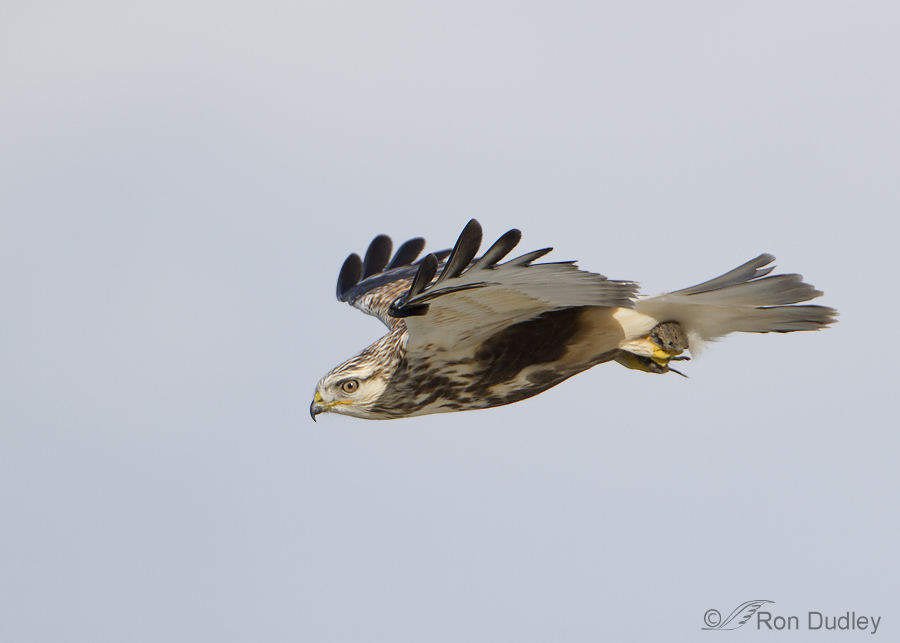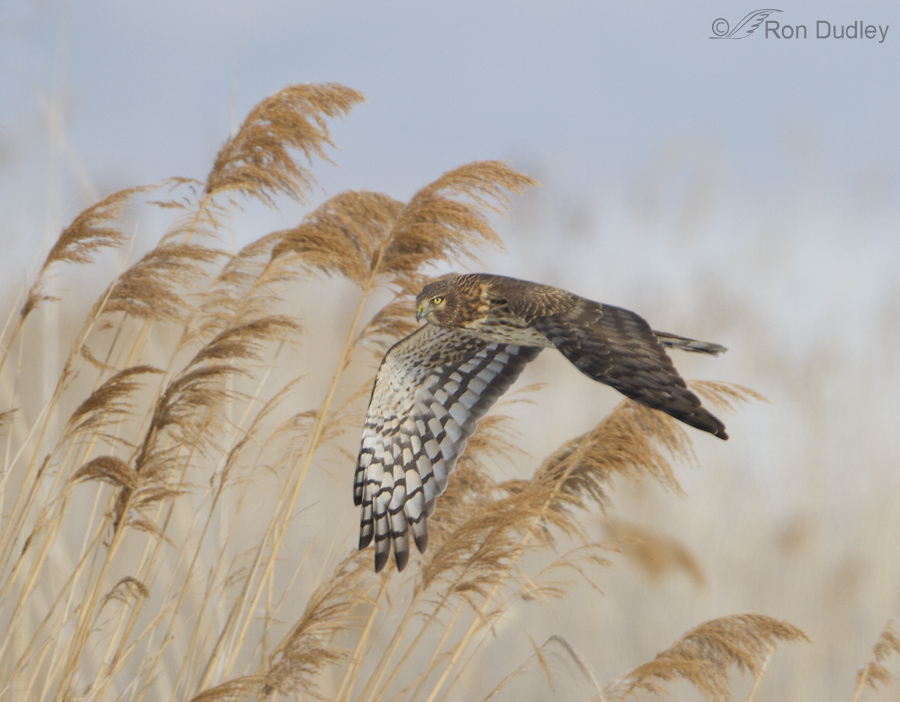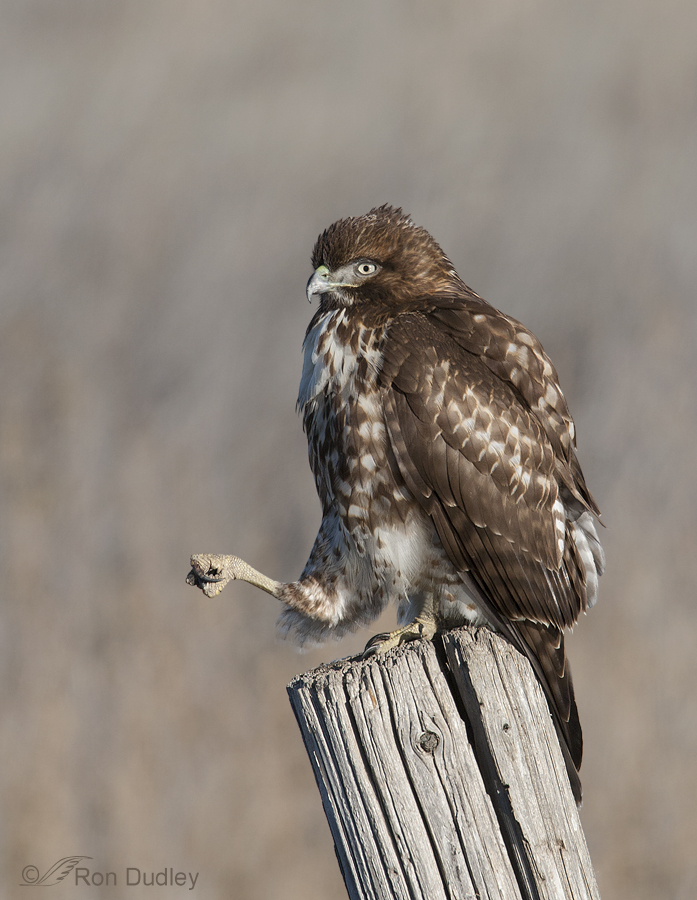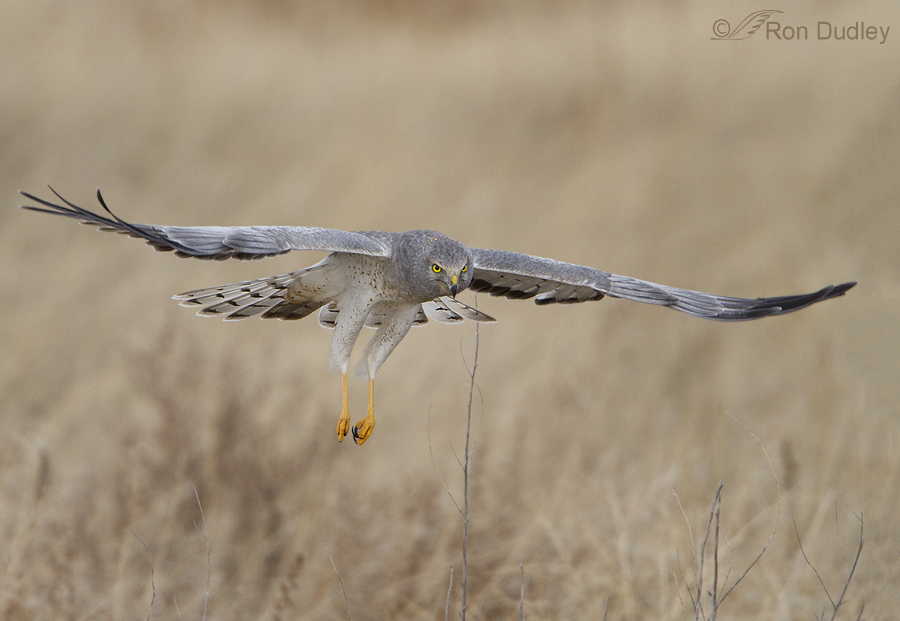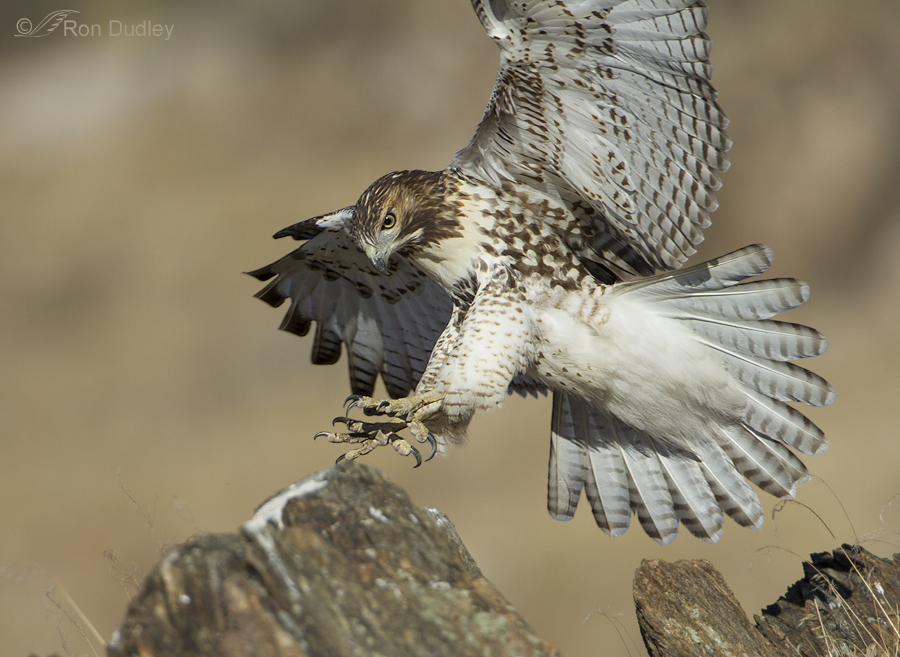Tag: Depth of field
Flight Shots, Habitat And Depth Of Field
A White-crowned Sparrow And The Effect Of Depth Of Field
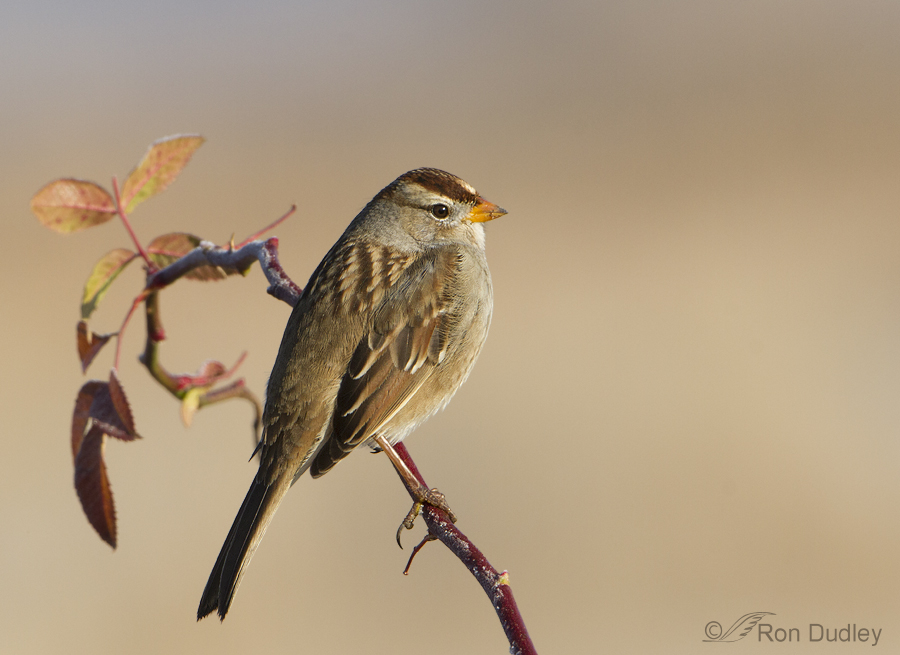
Two days ago I found this juvenile White-crowned Sparrow sunning itself in a wild rose-bush at Farmington Bay. It was a cold morning (you can see frost on the perch behind the bird) and due to the frigid temperature the sparrow wasn’t flitting around much so I did a little experimentation with depth of field.
A Goofy-looking Red-tailed Hawk
Male Northern Harrier Hunting
Three Burrowing Owls and More Challenges With Depth Of Field
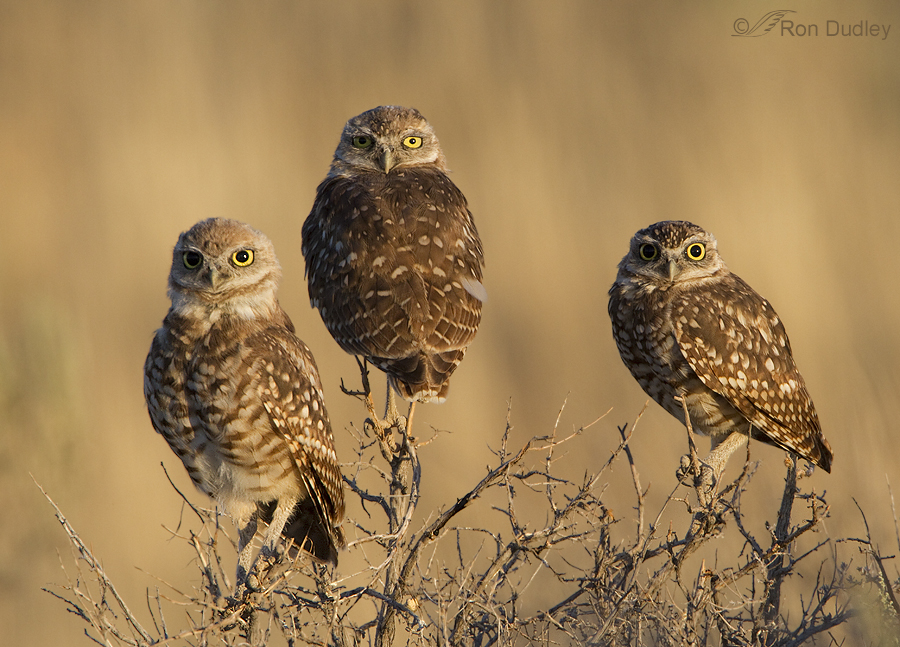
I’d been photographing a family of these birds for several weeks but typical of the species they were usually on the ground with obstructing vegetation in front of them or buried too deeply in the sagebrush. But as I approached them on this early August morning (in my pickup, from the road) there were two juveniles and one adult perched high on the sagebrush in nice warm light and there was a clean, pleasing background. My little heart went pit-a-pat at the opportunity but then I had to deal with the harsh reality of depth of field.
Red-tailed Hawk – Another Optical Illusion
Red-tailed Hawk – A Twisting Take-off After Prey
The sturdy, broad-winged buteos tend to be large raptors with correspondingly slower movements than most smaller birds. Most of the time when I’m watching them they’re hunting from an elevated perch or soaring overhead and in neither situation do they typically demonstrate much quickness or agility.
But they can put on quite the show when they need to.
Cliff Swallows In Flight
Cliff Swallows are one of North America’s most social land birds. Their nesting colonies sometimes consist of up to 7,000 individuals. Originally they were birds of the western mountains where they nested under horizontal rock ledges in canyons and foothills but in the last 150 years their range has expanded to include most of the continent due to the construction of buildings, bridges and highway culverts that provide alternative nesting sites. But holy moly, are they ever difficult to photograph in flight! I suspect that most serious bird photographers have attempted swallow (any species) flight shots and I’m no exception. But their small size combined with their swift, erratic flight has always stymied me. Until last May I didn’t have a single legitimate “keeper” of any swallow species in flight but that spring I was finally able to get some shots I like but it took some significant alteration of my past strategies. 1/3200, f/7.1, ISO 800, 500 f/4, natural light One of my problems in the past was that the bird was nearly always shaded underneath. So finally it struck me (duh!) that I needed to be shooting them when the sun was very low – for me that meant early in the morning. 1/2500, f/6.3, ISO 800, 500 f/4, natural light But shooting flight shots just as the sun comes up provides another problem – sufficient shutter speed. At that time of day the light intensity is relatively low so I needed to be shooting at the effective noise limit of my Canon 7D – ISO 800….
Shutter Speed and Take-off Shots
Just a single image today, to illustrate a lesson I’ve learned before but “relearned” yesterday. I shoot lots of birds at take-off, particularly raptors. For those larger subjects relatively slow shutter speeds will usually freeze the motion, even in the wings. Typically, 1/1200 or 1/1600 will do just that. 1/3200, f/5.6, ISO 500, 500 f/4, 1.4 tc, cloned out an OOF sunflower stalk to the right of the bird So yesterday after I’d taken a few perched shots of this shrike I set up for a take-off since it was facing to my right and I figured it would take off in that direction, giving me both good light and a take-off posture that would require relatively little depth of field so f/5.6 would suffice. Then I noticed that I had a shutter speed of 1/3200 and I remember thinking that might be a little excessive and I should dial back to f/ 6.1 for slightly more DOF and less shutter speed. But I knew that if I took a moment to change my settings the bird would choose that instant to launch and I’d miss the shot. So I stuck with my settings. I’m glad I did. Wing motion in these little birds is incredibly fast! Here, even 1/3200 didn’t completely freeze the wings. Don’t get me wrong – a little motion blur in wings of birds in flight isn’t an issue with me and I’m perfectly happy with this image the way it is. But for my tastes I’m glad there’s no more motion blur than there is. Ron
Shrikes, Pellets and Photographer’s Frustrations
For about three years now one of my photography goals has been to get a series of quality shots showing a Loggerhead Shrike regurgitating a pellet. My requirements were that the images must be sharp with good detail and light, there must be no significant distractions or clutter to interfere with the behavior, there should be light in the eye (a catch light) and the last shot must show the pellet after it has left the birds mouth. This post is a progress report of sorts on how I’ve fared with the goal. I’ll include some lessons I’ve learned and mistakes I’ve made so I hope you’ll bear with me through a few less than ideal images which help to illustrate some of those lessons. 1/1250, f/8, ISO 640, 500 f/4, 1.4 tc This was my first image of a shrike ejecting a pellet (3/3/10). I didn’t anticipate it happening and wasn’t even sure what was going on until I processed the image. I got two almost identical shots that showed the pellet in the mouth and missed the pellet as it was ejected (I think I remember my buffer filling up just about then). I was also too far away for good image quality – this is a large crop. 1/3200, f/6.3, ISO 500, 500 f/4, 1.4 tc On the next opportunity (8/5/11) I was frustrated by obstructing branches and a poor light angle. While this young bird was ejecting the pellet it was facing mostly toward me which put its face and the pellet in shadow. Then the juvenile did something completely unexpected…
American Kestrel Preening on a Rabbitbrush Perch
American Kestrels are pugnacious and skittish little falcons that are usually difficult to approach. But last week I found a cooperative male warming himself in the early morning sun while perched on rabbitbrush. Though feisty by nature this kestrel looked almost cuddly while all puffed up against the cold and nestled into the bush. 1/2000, f/8, ISO 500, 500 f/4, 1.4 tc I first approached him head-on which gave me some images where bird and perch combined to produce a pyramid shape that I liked. 1/3200, f/6.3, ISO 400, 500 f/4, 1.4 tc But then I maneuvered to get a different angle so that at least part of the tail would be visible. In these early shots my camera settings were meant to give me enough shutter speed for the take-off that I fully expected. 1/2000, f/7.1, ISO 250, 500 f/4 But when he began to groom contentedly I started fiddling with my settings to get shutter speeds and depth of field more appropriate for the situation. Here he is passing one of his tail feathers through his bill in typical preening behavior. 1/1600, f/8, ISO 250, 500 f/4 He gave me a variety of preening poses that I liked. 1/1250, f/8, ISO 250, 500 f/4 Some of the neck feathers are difficult to reach so they go through some strange contortions in an effort to get to them. 1/1600, f/8, ISO 320, 500 f/4 Here the eye was half closed but I was still able to get a catch light. …
Just A Shot That I Like… #12, American Avocet Ballet
Occasionally an image still appeals to me despite significant imperfections. In this shot the cluttered background is not ideal nor are the specular highlights on the leg of the male’s reflection but I quite like the positions of both birds, their reflections and the good separation between the avocets and the reflections. 1/1250, f/10, ISO 400, 500 f/4, 1.4 tc Fighting avocets are very difficult to photograph because typically several male combatants are separated from each other by some distance and you never know which bird is going to go after another one next and when the action begins it is blindingly fast. There’s also the problem of getting enough shutter speed and depth of field for multiple birds in action. Shooting these birds fighting is nearly always a “poke and hope” situation. Setting the scene: I had been photographing four males fighting over a single female (sexes easily identifiable because the female has a shorter and more strongly recurved bill than does the male) when this male lifted off and attacked two other males just out of frame to the right. I just happened to catch the male in a good position over the female with reflections I liked. One of the things that made this shot work is that I had enough light to use f/10 for sufficient depth of field and still get a fast enough (just barely) shutter speed to get both birds relatively sharp. Ron
Strategies for Photographing Birds at Take-off
Photographing birds at take-off is very different from shooting them in flight, for a variety of reasons. In fact in some ways it’s more difficult. First, I’d best define what for me is a take-off shot. I think it’s a take-off and not a true flight shot when any of the following conditions are met: a.) the bird’s feet are still touching the perch, b.) the feet are still extended down or behind the bird from the effort of pushing off the perch and not tucked up against the body in an aerodynamic position or c.) it’s obvious from the flight posture of the bird or the presence of the just departed perch in the image that it has just taken off. I realize that this is an arbitrary definition and that technically as soon as the bird has left the perch it’s in flight but that’s how I’ll define it for this discussion. Take-off shots have lots of appeal for many, largely because the effort required for lift-off often provides a very dynamic flight posture with the wings, tail and legs/feet in exaggerated positions compared to “simple” flight. Many novice bird photographers are intimidated by the difficulties of flight photography and attempt take-offs instead, in the mistaken assumption that they should be relatively easy. Not so. Following are some strategies and tips for getting good take-off images that have worked for me. I hope they’ll be helpful to some of you. Plan ahead to avoid clipping body parts – particularly the wings: Many novice avian photographers are unpleasantly surprised by the amount of wing extension during take-off and they cut…
The Challenges of Photographing Birds in Flight in Low Light
Photographing birds in flight in relatively low light (dusk, dawn, cloudy conditions etc) isn’t easy. In addition to the expected challenge of locking focus onto a fast and often erratically moving target, in low light you have the problem of getting enough shutter speed to get a moving subject sharp. A potential solution to the problem is “opening up” – increasing the size of the aperture, which is the same as reducing the f-number – say as in changing your setting from f/7.1 to f/5.6. This lets more light into the camera in the same amount of time, allowing for an increase in shutter speed to freeze the motion of the bird. Opening up however has another effect – reducing depth of field, so less of your subject is likely to be tack sharp. Another potential solution is to increase ISO. Increasing ISO in digital cameras has the effect of seeming to increase the sensitivity of the camera’s sensor to light so that faster shutter speeds can be used but the downside to increasing ISO is that it can increase digital noise in the image. Sometimes in bird photography fantastic opportunities with birds in flight present themselves in less than ideal light. Your best chance at an acceptable image under those conditions is to understand the interplay between your camera settings – how changing aperture affects shutter speed and depth of field and how changing ISO affects shutter speed and the production of digital noise. Male Northern Harrier, 1/1250 @ f/11, ISO 800 It’s not often I get a…


